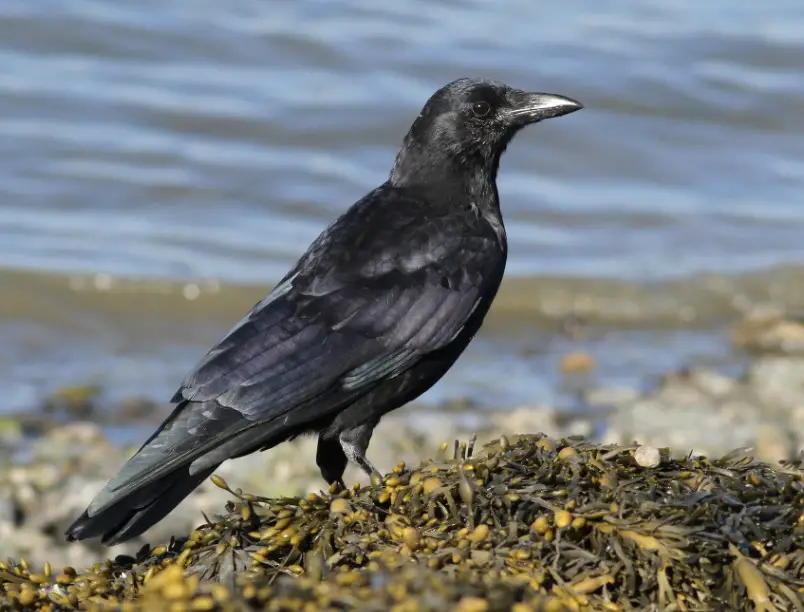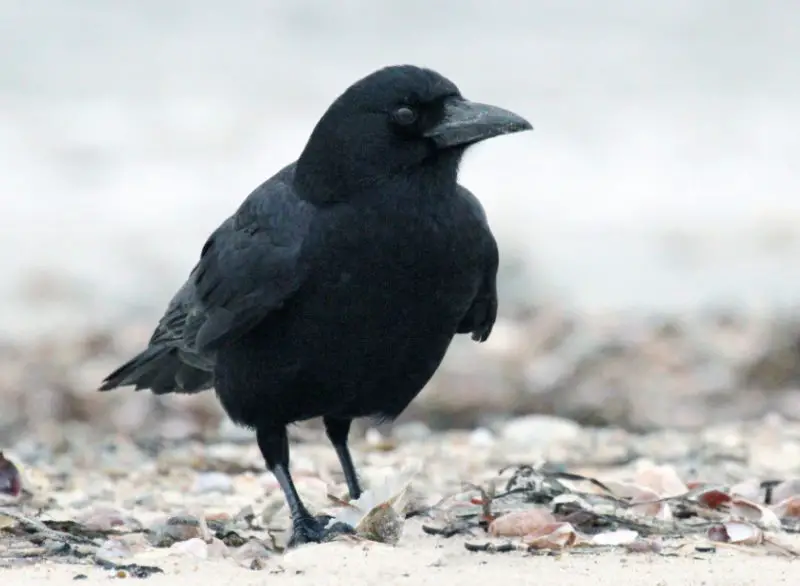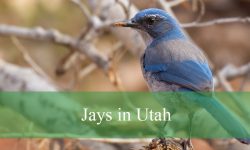Known for their intelligence and adaptability, crows find Florida to be an ideal environment where they can flourish year-round. From coastal marshes to bustling city centers, these birds thrive in a wide variety of landscapes. While many people think all crows look the same, Florida is actually home to two distinct species: the American Crow and the Fish Crow.
Both of these birds belong to the genus Corvus, which also includes ravens, jackdaws, and rooks in other parts of the world. However, in Florida, only these two crow species are native and widespread. Understanding how to tell them apart is useful not just for birdwatchers but also for anyone interested in Florida’s unique birdlife.
This detailed guide will walk you through the physical characteristics, behaviors, habitats, and calls of the American Crow and the Fish Crow. By the end, you will be able to confidently identify these fascinating birds whether you encounter them in your backyard, at the beach, or on a forest hike.
Overview of Crows in Florida
Crows are large black birds that often symbolize mystery and intelligence in folklore. In Florida, they play an important ecological role as scavengers and predators, helping to keep ecosystems balanced. They are opportunistic feeders, meaning they can survive on a wide range of foods, from insects and small animals to fruit, seeds, and even human leftovers.
Despite their similarities, the American Crow and the Fish Crow can be distinguished by their size, voice, and preferred habitats. Bird enthusiasts often find it challenging to separate them visually because their plumage looks almost identical. However, subtle differences in behavior, distribution, and sound provide reliable clues.
Understanding these two species is also valuable for conservation purposes. Although they are currently widespread, habitat changes, human activity, and disease outbreaks have affected crow populations in various regions of the United States.
American Crow in Florida

Characteristics and Identification
The American Crow (Corvus brachyrhynchos) is the larger of Florida’s two crow species. Adults typically measure between 16 and 21 inches in length, with a wingspan of about 33 to 39 inches. Their plumage is glossy black, sometimes reflecting hints of purple or green in bright sunlight. The bill is thick, black, and slightly curved, while the legs and feet are also entirely black.
Juvenile American Crows may look slightly browner and less glossy than adults, but they quickly grow into their characteristic sheen. One distinguishing feature is their larger size compared to the Fish Crow. Their steady wingbeats in flight also set them apart from some other bird species, though this is less useful when trying to distinguish them from Fish Crows, which have a similar flight pattern.
The voice of the American Crow is one of its best identifiers. Its call is a loud, clear “caw” that resonates distinctly. Unlike the Fish Crow’s nasal tone, the American Crow’s call is deeper and less drawn out. Birders often use vocalizations as the most reliable way to separate the two crows in Florida.
Behavior and Diet
American Crows are highly intelligent and social birds. They live in family groups and often work together to protect their nests and find food. These birds are known to use tools, recognize human faces, and remember locations where food has been hidden.
Their diet is extremely varied. They eat insects, earthworms, small mammals, reptiles, amphibians, fruit, grains, and even carrion. In urban environments, American Crows are frequently seen scavenging from trash cans, roadsides, and picnic areas. They have adapted exceptionally well to living near humans.
During the breeding season, American Crows are very protective of their young. They construct large nests made of sticks and lined with softer materials such as grasses and animal fur. Both parents participate in feeding the nestlings, and sometimes offspring from previous years help raise new chicks, a behavior known as cooperative breeding.
Habitat and Distribution
In Florida, American Crows can be found statewide, though they are less common in some southern coastal areas compared to the Fish Crow. They thrive in mixed woodlands, farmlands, suburbs, and city parks. Their adaptability allows them to live comfortably in both rural and urban landscapes.
American Crows are year-round residents in Florida, meaning they do not migrate long distances. However, populations in northern states may move south during harsh winters, occasionally increasing crow numbers in Florida during colder months.
Fish Crow in Florida

Characteristics and Identification
The Fish Crow (Corvus ossifragus) is smaller than the American Crow but otherwise looks very similar. Adults typically measure 14 to 16 inches in length, with a wingspan of 28 to 39 inches. Like the American Crow, they have glossy black feathers, black bills, and black legs, making them visually difficult to distinguish.
The most reliable identification feature is the Fish Crow’s call. Instead of the classic “caw,” their voice is higher-pitched, shorter, and more nasal. It often sounds like “uh-uh” or “cah,” almost as if the bird has a cold. Experienced birders rely heavily on this vocal difference to separate Fish Crows from American Crows.
In flight, Fish Crows may appear slightly more slender and have faster wingbeats, but these traits can be subtle. For beginners, location and voice are the best tools for telling the two species apart.
Behavior and Diet
Fish Crows share many behavioral traits with American Crows, including intelligence, social structure, and adaptability. They are also opportunistic feeders, but they tend to live closer to water sources, which influences their diet. As their name suggests, they are more likely to eat fish, crustaceans, and other aquatic animals than their larger relatives.
That said, Fish Crows are not strictly tied to aquatic environments. They will readily scavenge, eat insects, consume fruit, and raid bird nests for eggs and hatchlings. In urban settings, they can be seen around parking lots, dumpsters, and picnic areas, much like American Crows.
Fish Crows nest in trees, often near water. Their nests are similar to those of American Crows, built with sticks and lined with softer plant materials. They are also protective parents and will aggressively defend their nesting territory from potential predators.
Habitat and Distribution
Fish Crows are strongly associated with coastal and wetland environments. In Florida, they are especially abundant along shorelines, river systems, marshes, and swamps. However, they are not limited to these areas and can also be found inland, particularly where lakes and wetlands are present.
They are year-round residents of Florida, with stable populations across much of the state. Because Florida is rich in aquatic habitats, Fish Crows thrive in both natural and urbanized settings, making them one of the most familiar crow species in the region.
Key Differences Between American Crow and Fish Crow
Although both species are glossy black and superficially identical, careful observation reveals differences that make identification easier. The American Crow is larger, with a deeper and louder “caw.” The Fish Crow is smaller and has a distinctive nasal call.
Habitat can also be a useful clue. American Crows are more evenly distributed across Florida’s landscapes, while Fish Crows are most common near coasts, rivers, and wetlands. Observing behavior may also help, as Fish Crows often forage around water, whereas American Crows are more frequently seen in agricultural fields and upland forests.
For birdwatchers, combining location, size, and especially vocalizations is the best strategy for confidently telling these two species apart.
Importance of Crows in Florida’s Ecosystem
Both crow species play important roles in Florida’s environment. As scavengers, they help clean up carrion and organic waste, reducing the spread of disease. As predators, they control insect and rodent populations, providing balance to ecosystems.
Crows are also seed dispersers. By eating fruits and berries and then depositing the seeds in new locations, they contribute to plant diversity and regeneration. Despite sometimes being seen as pests because of their loud calls or scavenging habits, they provide undeniable ecological benefits.
Their intelligence and adaptability make them particularly resilient to human development. Unlike some bird species that decline when natural habitats are altered, crows can adjust quickly and even thrive in cities and suburban neighborhoods.
Best Time and Places to Observe Crows in Florida
The best time to observe both American Crows and Fish Crows is during the early morning and late afternoon, when they are most active in foraging. Crows are diurnal, meaning they are active during the day and roost together at night.
In Florida, you can find American Crows across the state, including urban parks, farmland, and woodland edges. Fish Crows are most commonly spotted along coastlines, rivers, and wetlands, though they are also present in inland towns and cities.
During winter, large communal roosts of crows can sometimes be observed. These gatherings may include hundreds or even thousands of individuals, creating an impressive sight for birdwatchers.
Tips for Identifying Crows in the Field
To identify crows in Florida, focus first on listening to their calls. If the bird produces a deep, clear “caw,” it is most likely an American Crow. If the call sounds nasal and shorter, it is a Fish Crow.
Next, consider location. Birds near the coast or wetlands are more likely to be Fish Crows, while those in upland habitats are often American Crows. Size can help, but because both species overlap in dimensions, beginners may find it tricky to rely on this trait alone.
Finally, watching behavior can provide clues. Fish Crows are frequently seen foraging along shorelines or in marshes, while American Crows are more generalist in their habitat use.
Conclusion
Florida is home to only two types of crows, but they are some of the most intriguing birds in the state. The American Crow and the Fish Crow may look almost identical at first glance, yet they differ in voice, size, and habitat preference.
These birds demonstrate extraordinary intelligence, adaptability, and ecological importance. By scavenging, preying on pests, and dispersing seeds, they contribute significantly to Florida’s ecosystems. Whether you encounter a crow in a city park, on a beach, or deep in the wetlands, you are observing one of nature’s most resourceful creatures.
Learning to distinguish between the American Crow and the Fish Crow not only enhances your birdwatching skills but also deepens your appreciation for the wildlife that thrives in Florida. Next time you hear a “caw” or a nasal “uh-uh,” you will know which species of crow is nearby.
FAQs about Crows in Florida
How many types of crows are found in Florida?
Florida is home to two main crow species: the American Crow and the Fish Crow. Both are year-round residents and can be found across the state.
How can you tell the difference between an American Crow and a Fish Crow?
The easiest way is by listening to their calls. American Crows have a loud, clear “caw,” while Fish Crows make a shorter, nasal “uh-uh” sound.
Are crows in Florida dangerous to humans?
Crows are not dangerous to people, but they may swoop or call loudly if their nests are threatened. They usually avoid direct conflict with humans.
What do crows in Florida eat?
Both American and Fish Crows are omnivores. They eat insects, small animals, fish, fruit, grains, and carrion, and they often scavenge in urban areas.
Where is the best place to see crows in Florida?
American Crows can be seen statewide in parks, farmlands, and cities, while Fish Crows are most common near wetlands, rivers, and coastal areas.






